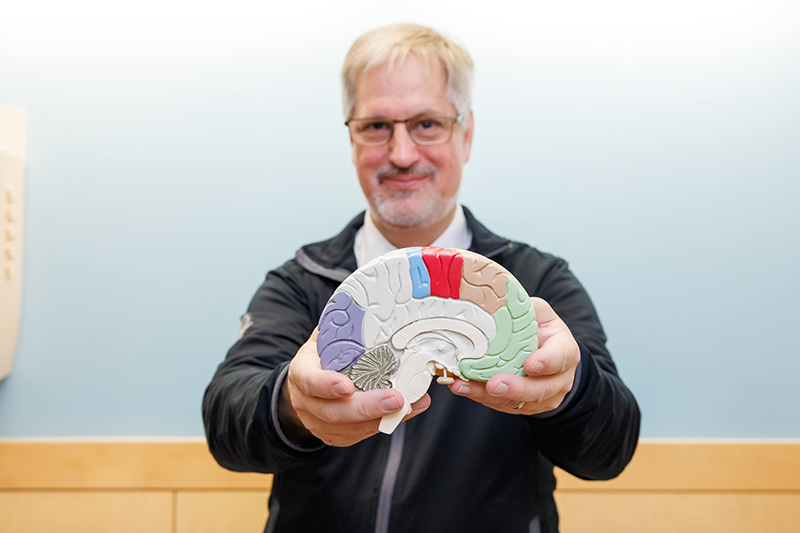
Dr. Scott Turner is leading a pediatric migraine study at Children’s of Alabama.
The University of Alabama at Birmingham’s pediatric neurology group at Children’s of Alabama is launching its first externally funded study on migraines this year, marking the start of what they hope will become a robust research program in the area. Such research is needed given that an estimated 17% of children have frequent or severe headaches according to their parents. [i],[ii] The Children’s headache clinic team knows these numbers well—they see hundreds of children with headaches each year.
The five-year study, funded by the Patient-Centered Outcomes Research Institute (PCORI), is a comparative effectiveness trial designed to determine which works better at preventing pediatric migraines: medication (amitriptyline) plus cognitive behavioral therapy (CBT) or CBT alone. Current guidelines recommend using the two together to prevent migraines, but there is limited data on whether CBT is just as effective on its own.
“The big question is, do they really need amitriptyline?” nurse practitioner Scott Turner, DNP, the principal investigator for the Children’s of Alabama site, said. “Or would CBT alone actually be effective?” If it is, he said, patients might not need medication, which always carries a risk of side effects.
CBT teaches kids how their body and brain experience pain and how to use relaxation skills to reduce stress and pain. Therapists also work with patients to help them reduce negative thought and feeling patterns, such as always thinking the worst is going to happen or that a migraine will ruin an important event. Parents learn how to reinforce their child’s active coping efforts.
Children’s is one of 15 sites participating in the study. Its primary outcome is reducing the number of headache days and migraine-related disability from baseline to 28 weeks. Secondary outcomes include changes in headache severity and effects on the patient’s physical functioning and quality of life. Participants will receive CBT via telehealth, an approach that worked well during the pandemic and provides greater availability. The goal is to recruit about 400 children nationally, and Children’s hopes to enroll approximately 25 patients in the study beginning this spring.
Although he’s in charge of the study at Children’s, Turner initially doubted that CBT alone could be better than CBT with medication. “I would have thought that pill-taking was essential,” he said. But after researching the topic and learning more about CBT, he’s unsure. “I guess we’ll find out in about five years.”
[i] Nieswand V, Richter M, Gossrau G. Epidemiology of Headache in Children and Adolescents-Another Type of Pandemia. Curr Pain Headache Rep. 2020 Aug 25;24(10):62. doi: 10.1007/s11916-020-00892-6. PMID: 32840694; PMCID: PMC7447651.
[ii] Lateef TM, Merikangas KR, He J, Kalaydjian A, Khoromi S, Knight E, Nelson KB. Headache in a national sample of American children: prevalence and comorbidity. J Child Neurol. 2009 May;24(5):536-43. doi: 10.1177/0883073808327831. PMID: 19406755; PMCID: PMC2794247.

No Comments